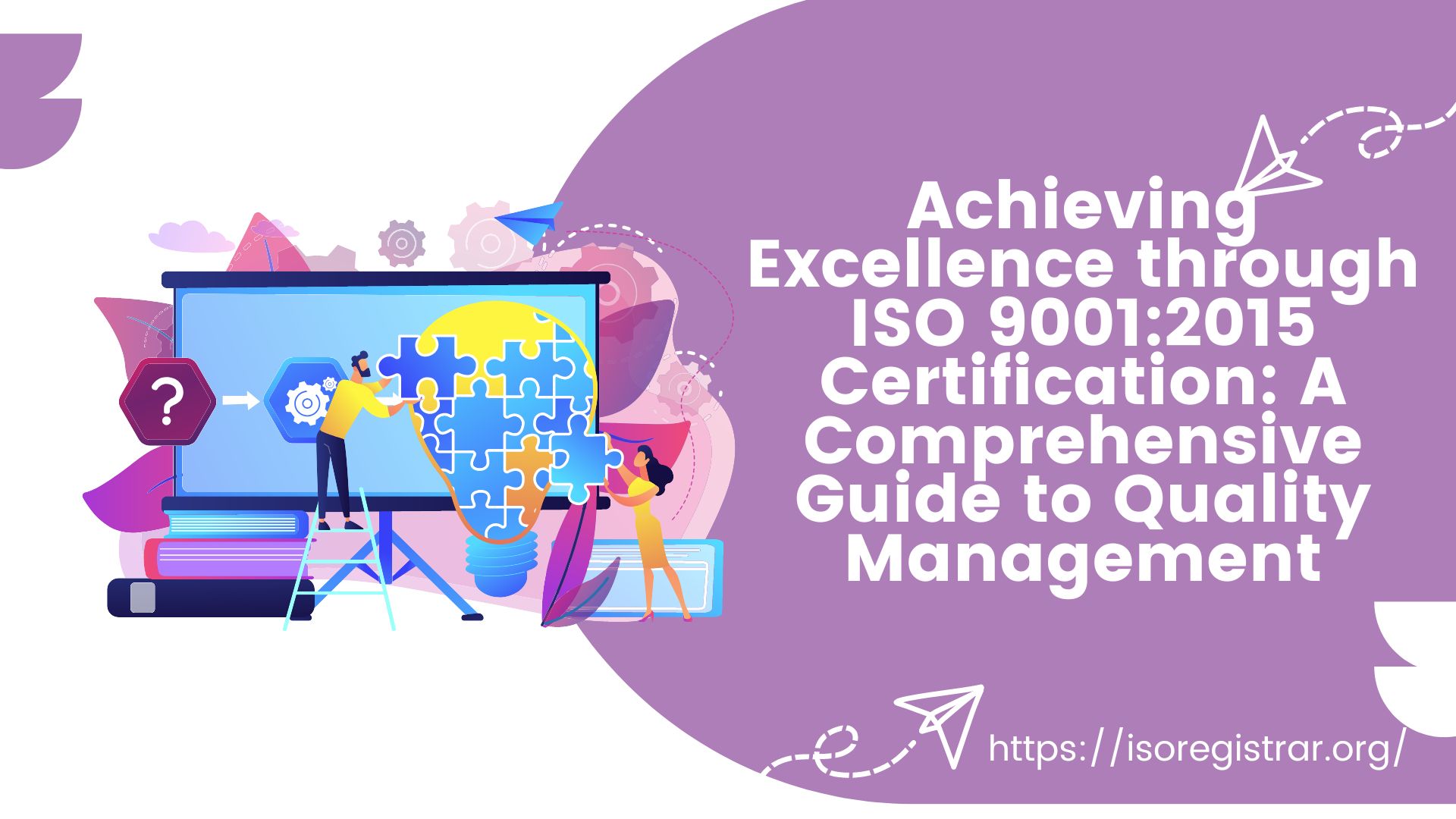Achieving Excellence through ISO 9001:2015 Certification: A Comprehensive Guide to Quality Management

Introduction
In today’s competitive business landscape, maintaining high-quality standards is not just an option; it’s a necessity. Organizations that prioritize quality management gain a significant advantage in delivering products and services that meet customer expectations consistently. One of the most recognized and respected quality management systems is the ISO 9001:2015 standard. In this comprehensive guide, we will delve into the significance, principles, benefits, and process of achieving ISO certification to help businesses understand the path towards excellence.
Understanding ISO 9001:2015
ISO 9001:2015 is an international standard developed by the International Organization for Standardization (ISO). It sets out the criteria for a quality management system and is designed to help organizations improve their processes, enhance customer satisfaction, and achieve continual improvement. The standard focuses on several key principles that form the foundation of quality management:
Customer Focus: Putting customers at the center of the organization’s operations and understanding and meeting their requirements.
Leadership: Establishing a strong leadership commitment to quality and promoting a culture of excellence.
Engagement of People: Involving employees at all levels, recognizing their contributions, and fostering a positive work environment.
Process Approach: Managing processes effectively to achieve desired outcomes efficiently.
Improvement: Encouraging continuous improvement of products, processes, and the quality management system itself.
Evidence-based Decision Making: Utilizing data and information for informed decision-making.
Relationship Management: Building and nurturing mutually beneficial relationships with suppliers and other stakeholders.
Benefits of ISO 9001:2015 Certification
Obtaining ISO 9001:2015 certification brings numerous advantages to organizations across various industries:
Enhanced Customer Satisfaction: By consistently meeting customer requirements and expectations, organizations can increase customer satisfaction and loyalty.
Improved Process Efficiency: Implementing ISO 9001:2015 helps streamline processes, reducing inefficiencies and minimizing waste.
Increased Employee Engagement: Engaged employees play a crucial role in delivering quality products and services. ISO 9001 encourages employee involvement and fosters a positive work culture.
Competitive Advantage: ISO 9001 certification signals to customers and partners that the organization is committed to delivering high-quality products and services.
Global Recognition: ISO 9001 is an internationally recognized standard, facilitating business expansion into new markets.
Better Decision Making: Data-driven decision-making becomes a norm with ISO 9001, leading to more effective strategies and outcomes.
Risk Mitigation: The standard emphasizes risk-based thinking, enabling organizations to identify and address potential issues proactively.
Regulatory Compliance: Achieving ISO 9001 certification demonstrates compliance with relevant regulations and standards.
Steps to Attain ISO 9001:2015 Certification
Implementing ISO 9001:2015 requires a systematic approach, and the process typically involves the following steps:
Gap Analysis: Conduct an initial assessment of the organization’s current processes against the requirements of ISO 9001:2015. Identify gaps and areas that need improvement.
Define Scope and Objectives: Determine the scope of the quality management system and set specific objectives aligned with the organization’s strategic goals.
Develop the Quality Management System: Establish the necessary processes, policies, and procedures to meet the ISO 9001:2015 requirements.
Training and Awareness: Train employees at all levels to understand the quality management system, their roles, and the importance of adhering to the standards.
Documentation: Create the required documentation, including a Quality Manual, procedures, work instructions, and records.
Implementation: Execute the quality management system across the organization and monitor its effectiveness.
Internal Audit: Conduct internal audits to assess the system’s conformity and identify areas for improvement.
Management Review: Hold regular management reviews to evaluate the system’s performance, assess opportunities for improvement, and allocate resources accordingly.
Corrective and Preventive Actions: Address non-conformities and potential issues through corrective and preventive actions.
Certification Audit: Engage a reputable certification body to conduct an external audit for ISO 9001:2015 certification.
Continual Improvement: Emphasize a culture of continuous improvement to enhance the effectiveness of the quality management system continuously.
Conclusion
ISO 9001:2015 certificate is not just a badge of honor; it’s a testament to an organization’s commitment to excellence and customer satisfaction. By implementing this internationally recognized standard, businesses can elevate their processes, empower their employees, and gain a competitive edge in the global marketplace. Achieving ISO 9001:2015 certification is a journey towards continual improvement, one that leads organizations to a future of sustainable success and quality-driven performance.
